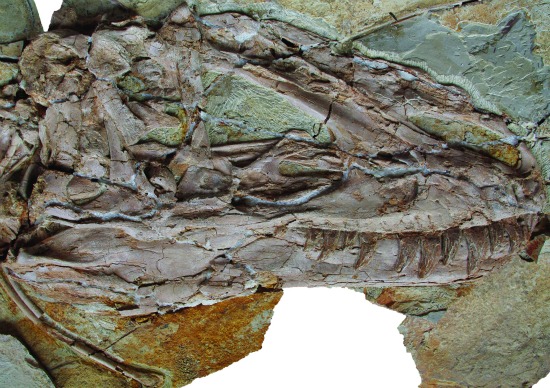| The positions of the bones in two of the specimens |
While Archaeopteryx was the first bird, plenty of feathered dinosaurs had evolved previously. They are well known throughout the Jurassic and Cretaceous fossil record. There are many different species from the crow -sized, four-winged Microraptor to the world famous Velociraptor, which we now know had feathers on its tail and forearms. Most of these dinosaurs are small, but now palaeontologists excavating in China have found the remains of a feathered giant.
 |
| The skull of Yutyrannus hauli. The light fuzz around the outside and patch close to the eye socket contain traces of feather impressions |
Its feathers were little more than simple filaments. 'They were more like the fuzzy down of a modern baby chick than the stiff plumes of an adult bird' said Professor Xing. Yet it is the largest feathered dinosaur on Earth, over 40 times the size of the next biggest, another Chinese oddity, known as Beipiaosaurus. What is rather interesting is its plumage. 'The idea that primitive feathers could have been for insulation rather than flight has been around for a long time' said Dr Corwin Sullivan, a Canadian palaeontologist involved in the study. 'However, large-bodied animals typically can retain heat quite easily, and actually have more of a potential problem with overheating. That makes Yutyrannus, which is large and downright shaggy, a bit of a surprise.'
The fact that it is a giant feathered dinosaur from the early Cretaceous suggests that the structures most often associated with birds may have developed far earlier in the predator lineage. It is possible that they evolved as a means of display first, before gaining full covering.